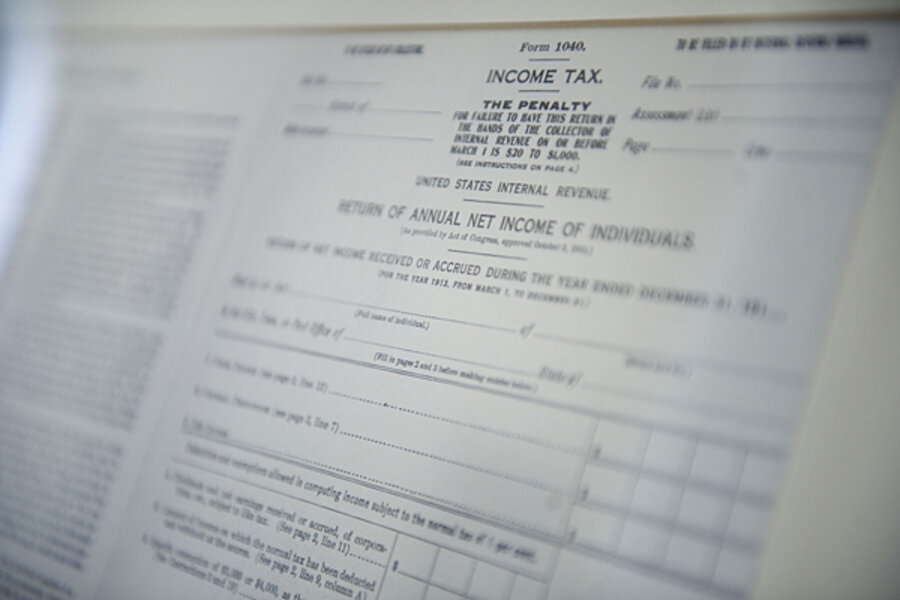Taxes: Who would pay more under Obama budget?
Loading...
The revenue proposals included in President Obama’s 2014 budget would, as intended, significantly raise taxes on the highest-income American households. However, despite Obama’s long-standing pledge to protect individuals making below $200,000 (and couples making $250,000 or less) from any tax hikes, even many of those families would pay slightly more than under today’s tax law.
According to new estimates by my colleagues at the Tax Policy Center, nearly everyone making $1 million and above would pay more in 2015. Obama’s tax changes (including individual, corporate, estate, and excise tax hikes), would boost their taxes by an average of almost $83,000. Such a change would trim their after-tax income by 3.8 percent.
Obama would boost their average federal tax rate to a hair above 41 percent, an increase of 2.3 percentage points from today’s law.
Overall, those making a million and up would pay 60 percent of the tax increases, and those in the top 5 percent (who make more than $227,000) would pay 85 percent of the new taxes.
Middle-income households would also pay more than under today’s law, but not much more. Those making between $50,000 and $75,000 would face an average tax hike of about $60 in 2015, trimming their after-tax income by 0.1 percent. Overall, these households would pay about 2 percent of all the new taxes though they represent about one-sixth of all taxpayers.
Those making between $100,000 and $200,000 would also pay a bit more—about $150 on average—and their after-tax income would be cut by about 0.1 percent. While these households represent about 14 percent of all taxpayers, they’d pay roughly 4 percent of Obama’s proposed tax hike .
The story would be a bit different by 2023. A key provision of Obama’s plan—changing the way the income tax is indexed for inflation to a system known as the chained Consumer Price Index—would slowly but steadily raise taxes. Thus, middle-income households would pay a larger share of their incomes in taxes in a decade than in 2015. At the same time, Obama would extend his 2009 tax cuts for low-income families with children and those going to college beyond their 2017 expiration date, reducing taxes for those households.
Those households making between $100,000 and $200,000 would end up paying an average of about $380 more in 2023, up from $150 in 2015. And their share of the total tax hike would nearly double to a bit more than 7 percent.
Obama’s budget included dozens of changes to the revenue code–raising some taxes and cutting others. They include tax increases for high-income households and both tax cuts and tax hikes for others.
His proposed increase in the tobacco tax would disproportionately affect low- and moderate-income taxpayers, who spend a bigger share of their income on cigarettes than the wealthy. However, middle-income households would benefit from two other tax changes: a more generous child and dependent care tax credit, and Obama’s proposal to extend those relatively generous rules for the earned income credit, child tax credit, and education credit.
For high-income taxpayers, the news is nearly all bad. Obama would limit the value of itemized deductions and some other tax preferences to 28 percent, limit the benefits of large tax-favored retirement accounts, adopt a version of the Buffett Rule by imposing a Fair Share minimum tax of 30 percent of adjusted gross income over $1 million (less a charitable credit), and raise taxes on estates, gifts, and certain family trusts.
For the most part, Obama’s tax plan would do exactly what he promised: It would raise taxes by about $1 trillion (at least by his measure) over the next decade. And most, but not quite all, of those new revenues would come from those making $200,000 or more. The president stepped over his no-taxes line-in-the-sand for those making less, but not by much more than the length of his big toe.







